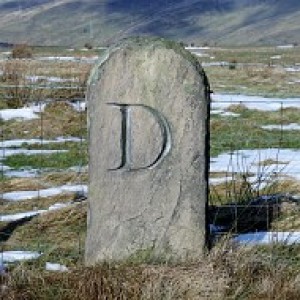Stroma Lighthouse
In 1890, a lighthouse was built at Stroma's northern tip, Langaton Point. It was only operational for six years before being replaced, and very little is now known about the structure. The unmanned lighthouse originally housed a Trotter-Lindberg lamp which burned petroleum spirit or lythene. The fuel supply was stored in cisterns near the lantern, which was regularly recharged at least fortnightly by the local fishermen or crofters. It was one of the first lighthouses in Scotland to use this type of "scintillating" light.
It was replaced in 1896, possibly on the same site, by a new lighthouse built to a design by David Stevenson as part of a major programme of construction works around northern Scotland. A fog warning system was installed the following year. Stevenson's lighthouse consists of a circular white-painted stone tower standing 23 metres (75 ft) high at an elevation of 32 metres (105 ft) above Mean High Water with a number of buildings nearby to house generators and the lighthouse keepers. The light was converted to a paraffin lamp when the former lythene lamp was found to be unsuitable. An oil store was installed in the lighthouse tower, ending the need for a separate building to hold the fuel.[14] The lighthouse was subjected to a machine-gun attack by a German aircraft on 22 February 1941. It caused little damage and no injuries, and the keepers were soon able to make repairs.
Until 1961 the lighthouse was administered as a shore station, and subsequently (after the resident population of Stroma had left) as a rock station. An electric lamp with a maximum power of 1.1 million cp was installed in 1972, utilising a sealed beam optic mounted on a gearless revolving pedestal. By this time the keepers and their families were the only people living on Stroma. A helicopter pad was installed to enable supplies and personnel to be flown in. In 1997 the station was converted to automatic operation, utilising a 250 watt metal halide lamp which rotates on a gearless pedestal. A lens system from Sule Skerry lighthouse was refitted in the Stroma lighthouse. The old air-driven fog horn was removed and replaced by an electric fog signal which is installed on the balcony of the lighthouse. The lighthouse station's power, which was formerly obtained from generators, is now provided by batteries which are charged at regular intervals.
- 0
- 0
- Panasonic DMC-TZ30
- 1/1000
- f/5.1
- 14mm
- 100

Comments
Sign in or get an account to comment.


